
Bioremediation broadly refers to any process wherein a biological system,living or dead,is employed for removing environmental pollutants from air,water,soil,flue gasses,industrial effluents etc,in natural or artificial settings. The natural ability of organisms to adsorb,accumulate,and degrade common and emerging pollutants has attracted the use of biological resources in treatment of contaminated environment. In comparison to conventional physiochemical treatment methods which suffer serious drawbacks,bioremediation is sustainable,eco-friendly,cheap,and scalable. Most bioremediation is inadvertent,involving native organisms. Research on bioremediation is heavily focused on stimulating the process by inoculation of a polluted site with organisms or supplying nutrients to promote the growth. In principle,bioremediation could be used to reduce the impact of byproducts created from anthropogenic activities,such as industrialization and agricultural processes. Bioremediation could prove less expensive and more sustainable than other remediation alternatives.

Phytoremediation technologies use living plants to clean up soil,air,and water contaminated with hazardous contaminants. It is defined as "the use of green plants and the associated microorganisms,along with proper soil amendments and agronomic techniques to either contain,remove or render toxic environmental contaminants harmless". The term is an amalgam of the Greek phyto (plant) and Latin remedium. Although attractive for its cost,phytoremediation has not been demonstrated to redress any significant environmental challenge to the extent that contaminated space has been reclaimed.

Henry Samueli is an American businessman,engineer,and philanthropist.

Rafael Luis Bras is a Puerto Rican civil engineer best known for his contributions in soil-vegetation-atmosphere system modeling. He served as the provost and executive vice president of Academic Affairs at the Georgia Institute of Technology from 2010 to 2020 while maintaining faculty appointments in the School of Civil and Environmental Engineering and the School of Earth and Atmospheric Sciences. He is currently a professor of water engineering at the Georgia Tech School of Civil and Environmental Engineering.
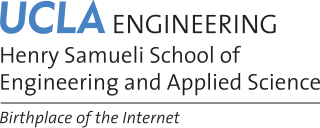
The UCLA Henry Samueli School of Engineering and Applied Science (HSSEAS),informally known as UCLA Engineering,is the school of engineering at the University of California,Los Angeles (UCLA). It opened as the College of Engineering in 1945 and was renamed the School of Engineering in 1969. Since its initial enrollment of 379 students,the school has grown to approximately 6,100 students. The school is ranked 16th among all engineering schools in the United States. The school offers 28 degree programs and is home to eight externally funded interdisciplinary research centers,including those in space exploration,wireless sensor systems,and nanotechnology.
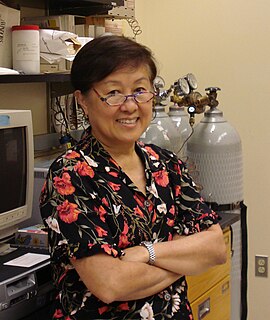
Lily Young is a distinguished professor of environmental microbiology at Rutgers,The State University of New Jersey in New Brunswick. She is also a member of the administrative council at Rutgers University. She is the provost of Rutgers New Brunswick. She is a member of the Biotechnology Center for Agriculture and the Environment and has her academic appointment in the Department of Environmental Sciences.

The Henry Samueli School of Engineering (HSSoE) is the academic unit of the University of California,Irvine that oversees academic research and teaching in disciplines of the field of engineering. Established when the campus opened in 1965,the school consists of five departments,each of which is involved in academic research in its specific field,as well as several interdisciplinary fields. The school confers Bachelor of Science,Master of Science,and Doctor of Philosophy degrees.
Soroosh Sorooshian is an Iranian-born American civil engineer,and educator. He is a distinguished professor of civil and environmental engineering at the University of California,Irvine and currently serving as the Director of the Center for Hydrometeorology and Remote Sensing.

Bruce E. Rittmann is Regents' Professor of Environmental Engineering and Director of the Swette Center for Environmental Biotechnology at the Biodesign Institute of Arizona State University. He was also elected a member of the National Academy of Engineering in 2004 for pioneering the development of biofilm fundamentals and contributing to their widespread use in the cleanup of contaminated waters,soils,and ecosystems.
The Huber Civil Engineering Research Prize is the highest level mid-career research award in all areas of civil engineering. The award is annually given to individuals with notable achievements and contributions in research with respect to all disciplines of civil engineering. This award was first established by the American Society of Civil Engineers (ASCE) board of direction in 1946 and was given for the first time in 1949.
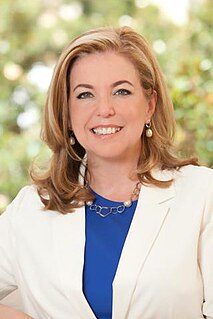
Vicki Leigh Colvin is a Professor of Engineering and Molecular Pharmacology at Brown University. She is the Director of the Centre for Biomedical Engineering. Her work focuses on the synthesis and characterisation of nanomaterials. She is a Fellow of the American Association for the Advancement of Science and the American Institute for Medical and Biological Engineering.
Lisa Alvarez-Cohen is the Vice Provost for Academic Planning Fred and Claire Sauer Professor at the University of California,Berkeley. She was elected a member of the National Academy of Engineering in 2010 for the discovery and application of novel microorganisms and biochemical pathways for microbial degradation of environmental contaminants. She is also a Fellow of the American Society for Microbiology.
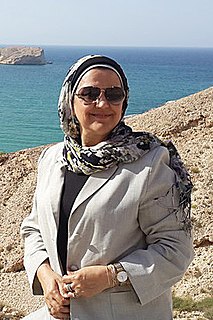
Souad Naji Al-Azzawi is an Iraqi environmentalist &academic researcher in various engineering disciplines,in addition to having established and assisted in the establishment of multiple research &academic institutions in Iraq. She is the first Arab to receive the Nuclear-Free Future Award,with has more than 50 published scientific papers on topics ranging from water desalination,nuclear waste management,and Depleted Uranium contamination among others and is a distinguished member of the Iraqi scientific community.
Efi Foufoula-Georgiou is a Distinguished Professor in the Civil and Environmental Engineering department at the University of California,Irvine. She is well known for her research on the applications of wavelet analysis in the fields of hydrology and geophysics and her many contributions to academic journals and national committees.

Reginald DesRoches is an American civil engineer who,as of July 1,2022,serves as the president at Rice University. From 2020 until 2022,he served as provost of Rice. Earlier,beginning in 2017,he was the dean of engineering at the at Rice's school of engineering,and from 2012 to 2017,DesRoches was the Karen and John Huff Chair at the Georgia Institute of Technology.
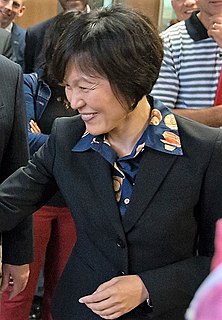
Qilin Li is a Chinese environmental engineer who is a professor of Civil and Environmental Engineering at Rice University. She develops new technologies to analyze and treat contaminated water. Li is a Fellow of the International Water Association.
Jennifer L. West is an American bioengineer. She is the current Dean of Engineering and Applied Science at the University of Virginia. She was the Fitzpatrick University Professor of Biomedical Engineering at Duke University from 2012-2021. In 2000,West cofounded Nanospectra Biosciences in Houston to develop a cancer therapy based on gold nanoparticles that destroy tumor cells and has been listed by MIT Technology Review as one of the 100 most innovative young scientists and engineers world wide.
Denise R. Aberle is an American radiologist and oncologist. As a professor of radiology in the David Geffen School of Medicine at UCLA and a professor of bioengineering in the UCLA Henry Samueli School of Engineering and Applied Science,Aberle was elected a member of the National Academy of Medicine and Fellow of the American Institute for Medical and Biological Engineering.
Danijela Branislav Cabric is an American electrical engineer. She is an associate professor in the Electrical and Computer Engineering Department at the University of California,Los Angeles. During the COVID-19 pandemic,Cabric was elected a Fellow of the Institute of Electrical and Electronics Engineers (IEEE) for her "contributions to theory and practice of spectrum sensing and cognitive radio systems."
Nancy Gail Love is an American engineer who is the JoAnn Silverstein Distinguished University Professor of Environmental Engineering at the University of Michigan. She is the former President of the Association of Environmental Engineering and Science Professors and a Fellow of both the International Water Association and the Water Environment Federation. She was awarded the 2021 AEESP Frederick George Pohland Medal.











